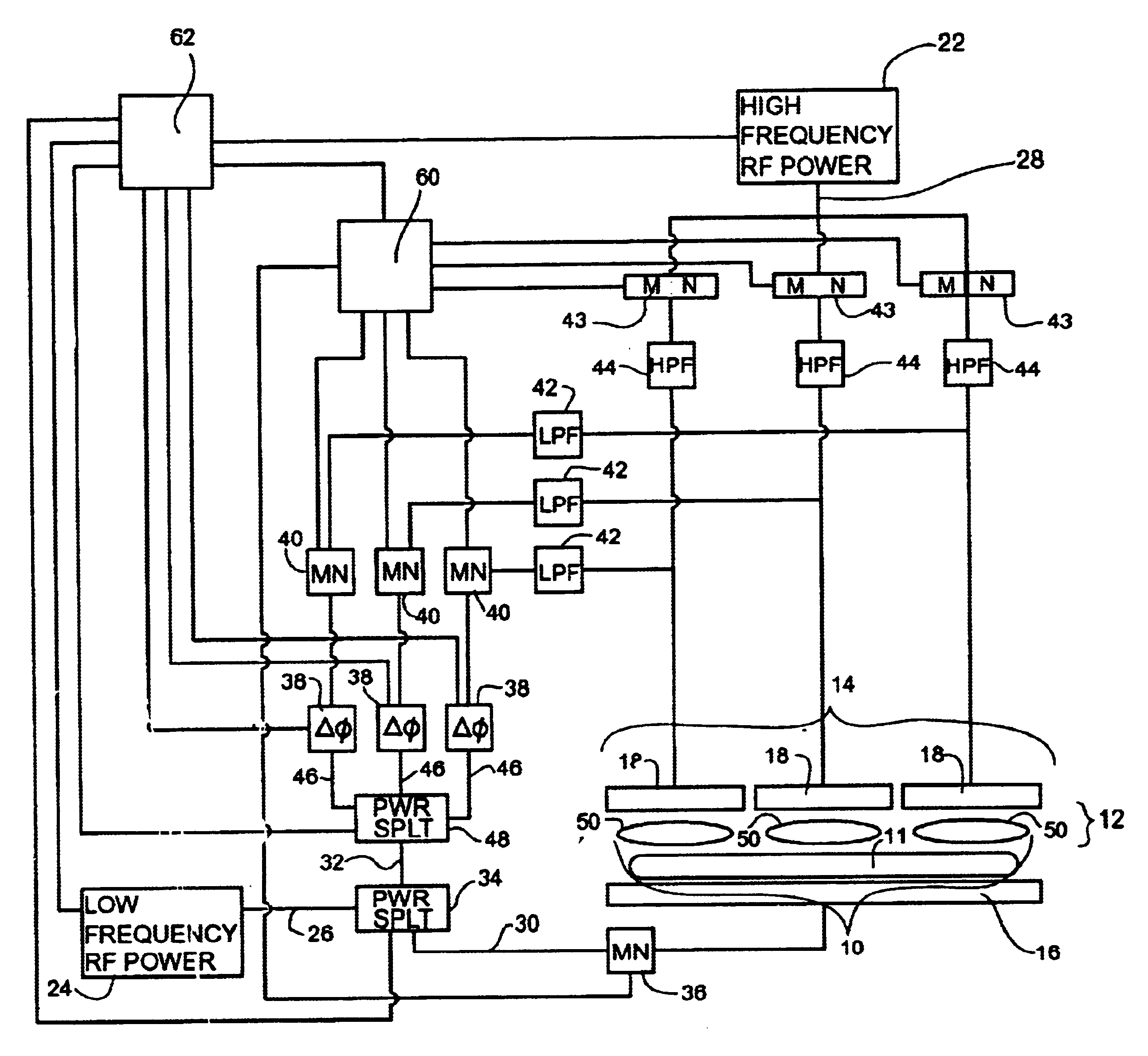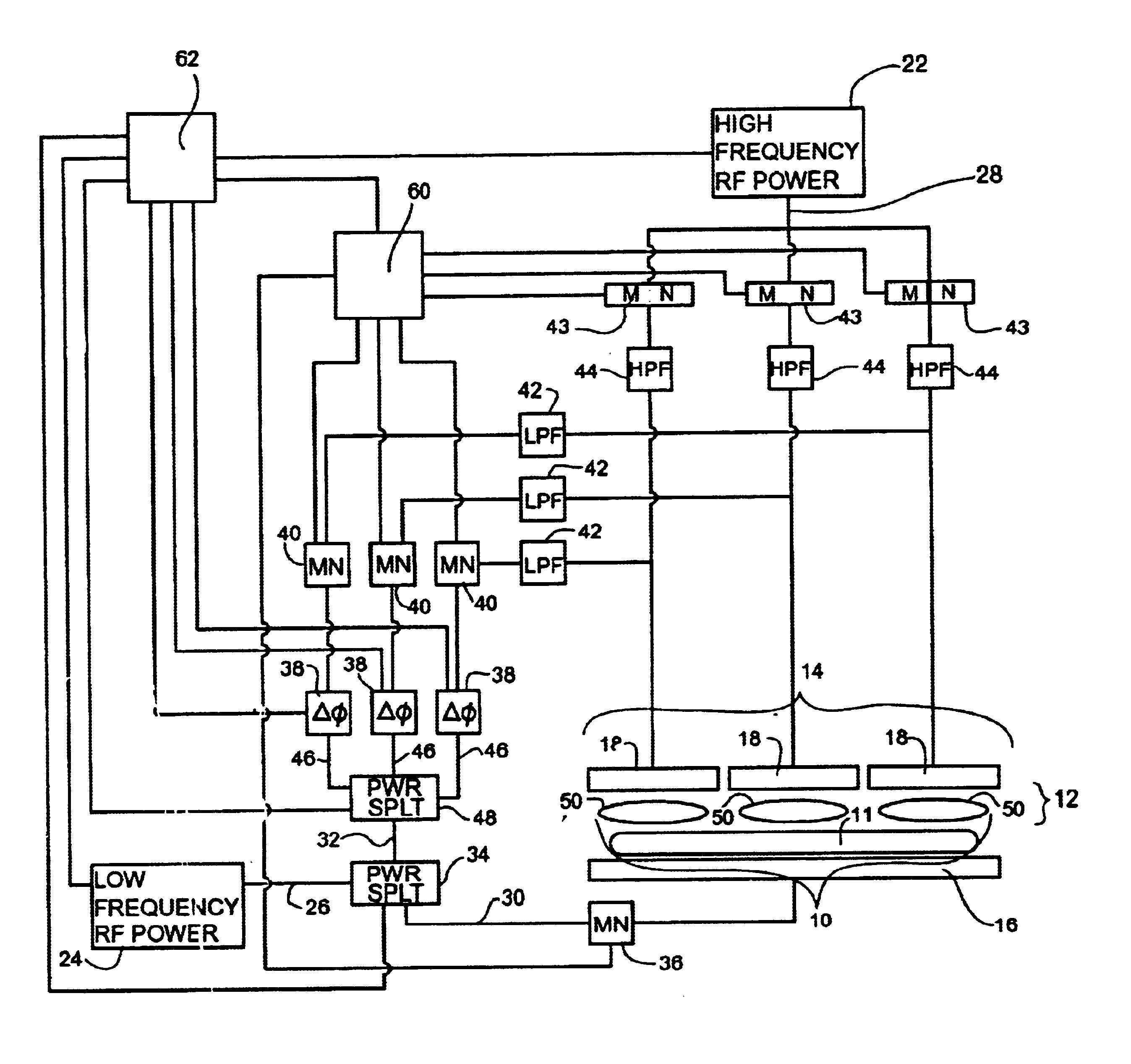Method to affect spatial distribution of harmonic generation in a capacitive discharge reactor
a capacitive discharge and spatial distribution technology, applied in the field ofplasma processing, can solve the problems of poor yield, uniform etching of workpieces, and inability to uniformly process workpieces
- Summary
- Abstract
- Description
- Claims
- Application Information
AI Technical Summary
Benefits of technology
Problems solved by technology
Method used
Image
Examples
Embodiment Construction
The figure shows the structure of a capacitively coupled plasma reactor according to the present invention. Two parallel electrodes 14, 16 forming capacitor plates are arranged opposed to one another. The electrode 14 is segmented and is supplied with a high-frequency signal. Electrode 16 is supplied with a low-frequency signal. The bias electrode 16 can act as a holder (i.e., a chuck) for the workpiece 11 that is to be etched. A gas source and exhaust, not shown, allow gas to enter the plasma generation region 12 between the plasma electrode 14 and the bias electrode 16. The plasma electrode 14 and the bias electrode 16 are excited by one or more radio frequency power supplies 22, 24 to generate plasma 10 in the plasma region 12 of the plasma reactor. Typically, the plasma electrode 14 can be excited at a primary frequency of 60 MHz, and the bias electrode 16 can be excited at a frequency of 2 MHz. One aspect of the present invention involves applying a portion of the lower frequen...
PUM
| Property | Measurement | Unit |
|---|---|---|
| frequency | aaaaa | aaaaa |
| frequency | aaaaa | aaaaa |
| electric power | aaaaa | aaaaa |
Abstract
Description
Claims
Application Information
 Login to View More
Login to View More - R&D
- Intellectual Property
- Life Sciences
- Materials
- Tech Scout
- Unparalleled Data Quality
- Higher Quality Content
- 60% Fewer Hallucinations
Browse by: Latest US Patents, China's latest patents, Technical Efficacy Thesaurus, Application Domain, Technology Topic, Popular Technical Reports.
© 2025 PatSnap. All rights reserved.Legal|Privacy policy|Modern Slavery Act Transparency Statement|Sitemap|About US| Contact US: help@patsnap.com


